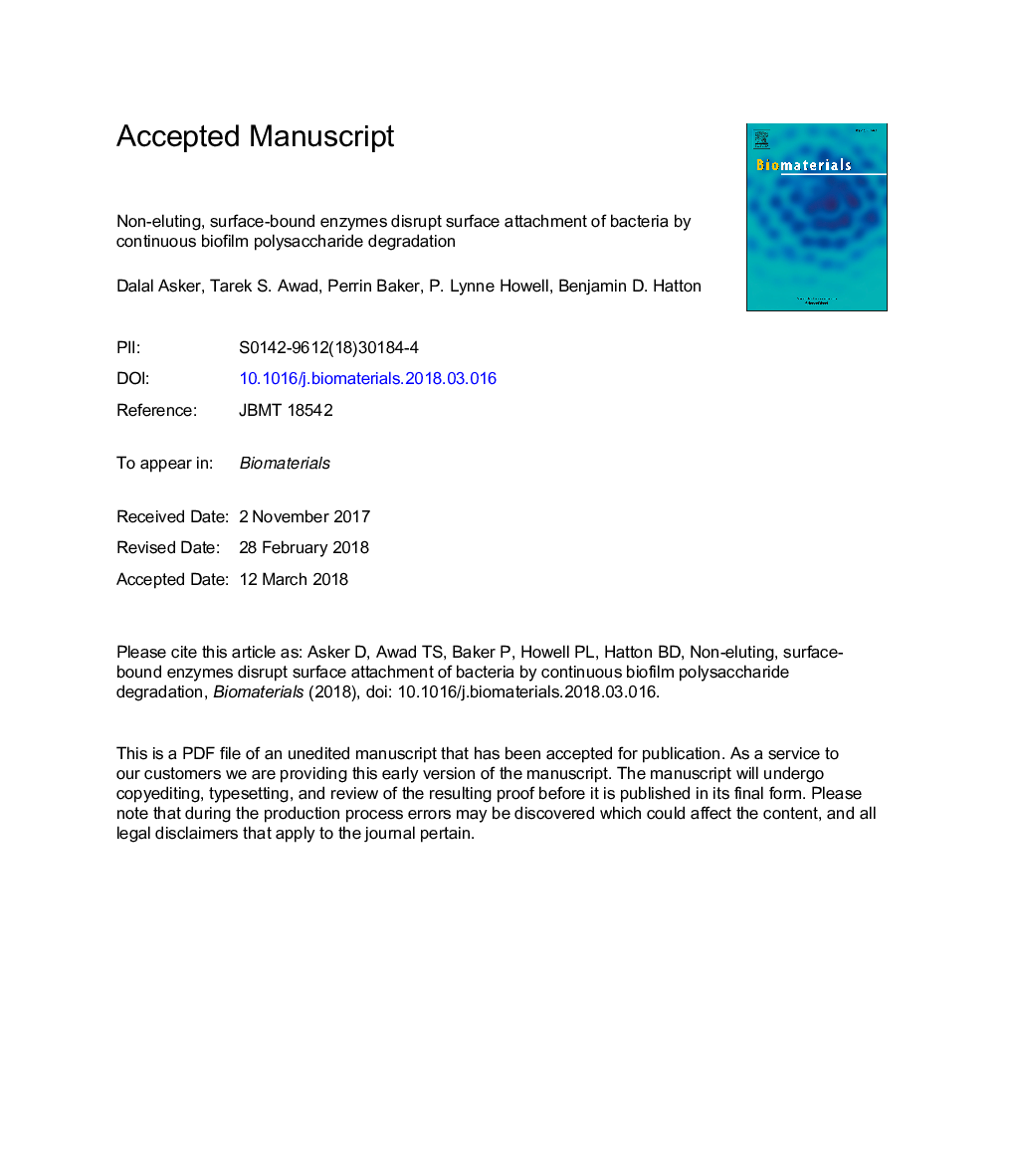| Article ID | Journal | Published Year | Pages | File Type |
|---|---|---|---|---|
| 6484541 | Biomaterials | 2018 | 29 Pages |
Abstract
Bacterial colonization and biofilm formation on surfaces are typically mediated by the deposition of exopolysaccharides and conditioning protein layers. Pseudomonas aeruginosa is a nosocomial opportunistic pathogen that utilizes strain-specific exopolysaccharides such as Psl, Pel or alginate for both initial surface attachment and biofilm formation. To generate surfaces that resist P. aeruginosa colonization, we covalently bound a Psl-specific glycoside hydrolase (PslGh) to several, chemically-distinct surfaces using amine functionalization (APTMS) and glutaraldehyde (GDA) linking. In situ quartz crystal microbalance (QCM) experiments and fluorescence microscopy demonstrated a complete lack of Psl adsorption on the PslGh-bound surfaces. Covalently-bound PslGh was also found to significantly reduce P. aeruginosa surface attachment and biofilm formation over extended growth periods (8 days). The PslGh surfaces showed a â¼99.9% (â¼3-log) reduction in surface associated bacteria compared to control (untreated) surfaces, or those treated with inactive enzyme. This work demonstrates a non-eluting 'bioactive' surface that specifically targets a mechanism of cell adhesion, and that surface-bound glycoside hydrolase can significantly reduce surface colonization of bacteria through local, continuous enzymatic degradation of exopolysaccharide (Psl). These results have significant implications for the surface design of medical devices to keep bacteria in a planktonic state, and therefore susceptible to antibiotics and antimicrobials.
Related Topics
Physical Sciences and Engineering
Chemical Engineering
Bioengineering
Authors
Dalal Asker, Tarek S. Awad, Perrin Baker, P. Lynne Howell, Benjamin D. Hatton,
